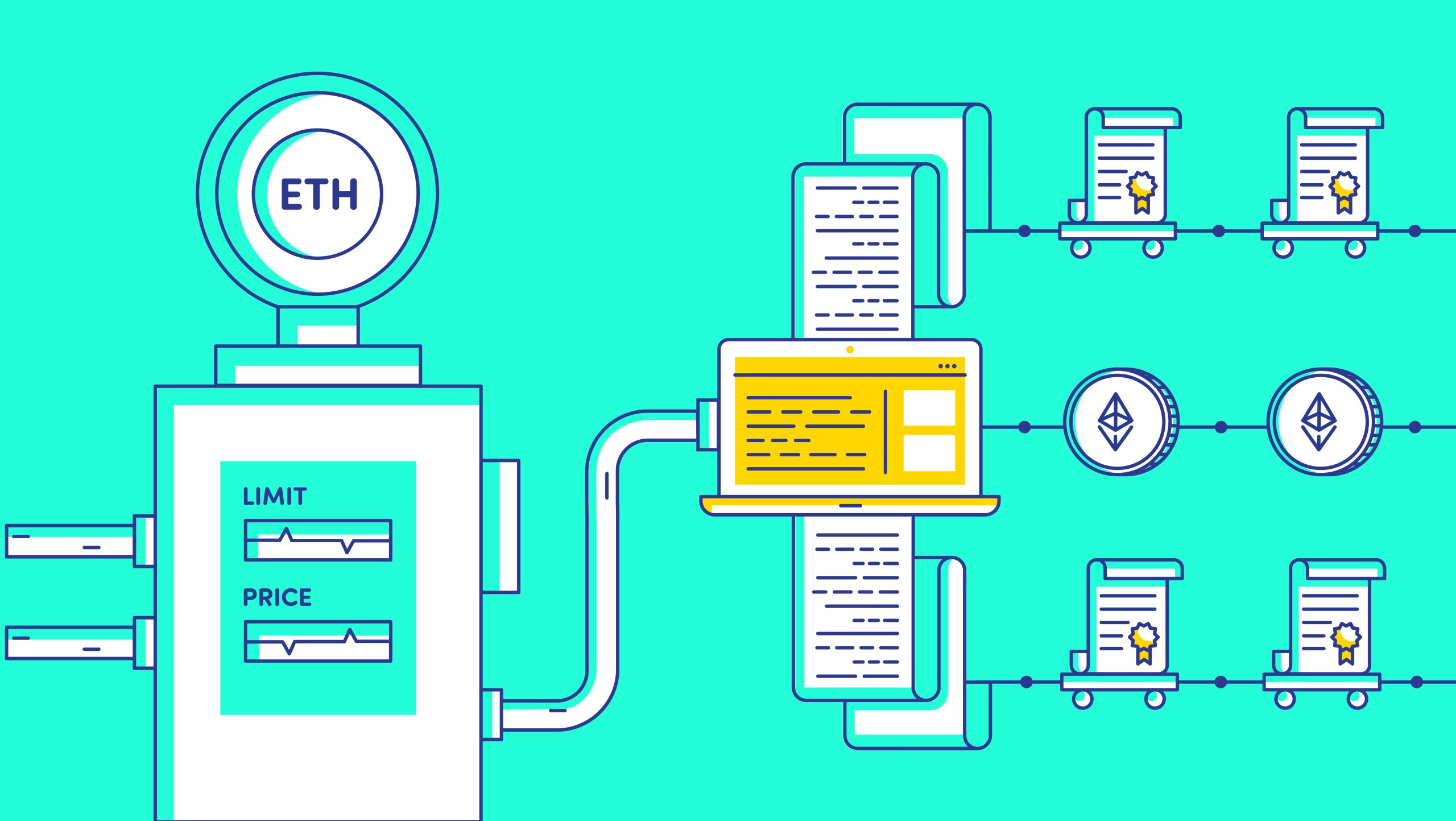Understanding Gas Fees in Ethereum Transactions

- What are gas fees in Ethereum transactions?
- Factors that influence gas fees in Ethereum transactions
- How to calculate gas fees for Ethereum transactions
- Strategies to optimize gas fees in Ethereum transactions
- Common misconceptions about gas fees in Ethereum transactions
- The future of gas fees in Ethereum transactions
What are gas fees in Ethereum transactions?
Gas fees in Ethereum transactions refer to the amount of cryptocurrency that users need to pay to miners to have their transactions processed on the Ethereum blockchain. **Gas fees** are essential to ensure that transactions are prioritized and executed in a timely manner.
Gas fees are calculated based on the computational power required to process a transaction and the current network congestion. **Ethereum gas fees** are denominated in **Ether**, with the fee amount varying depending on the complexity of the transaction.
Users can set the gas fee they are willing to pay for a transaction, with higher fees resulting in faster processing times. Conversely, lower fees may lead to delays in transaction confirmation. It is essential for users to strike a balance between paying a reasonable fee and ensuring timely transaction processing.
Gas fees play a crucial role in the Ethereum ecosystem, as they incentivize miners to validate transactions and secure the network. By paying gas fees, users contribute to the overall health and security of the Ethereum blockchain.
In conclusion, gas fees are a fundamental aspect of Ethereum transactions, ensuring that the network functions smoothly and efficiently. Users should be mindful of setting appropriate gas fees to strike a balance between transaction speed and cost-effectiveness.
Factors that influence gas fees in Ethereum transactions
Gas fees in Ethereum transactions are influenced by several factors that users need to consider before initiating a transaction on the network. Understanding these factors can help users make informed decisions and optimize their transaction costs. Some of the key factors that influence gas fees in Ethereum transactions include:
– **Network Congestion**: When the Ethereum network is congested, with many users trying to send transactions at the same time, gas fees tend to increase. This is because users compete to have their transactions included in the next block, leading to higher fees to incentivize miners to prioritize their transactions.
– **Gas Price**: The gas price set by users when sending a transaction directly impacts the total gas fees paid. Users can choose to set a higher gas price to have their transactions processed faster or a lower gas price to save on fees but potentially wait longer for confirmation.
– **Gas Limit**: The gas limit represents the maximum amount of gas a user is willing to spend on a transaction. Setting a higher gas limit can ensure that a transaction is not abruptly terminated due to running out of gas, but it also means higher fees. Conversely, setting a lower gas limit can save on fees but may result in failed transactions.
– **Complexity of the Transaction**: The complexity of a transaction, such as executing smart contracts or interacting with decentralized applications (dApps), can impact gas fees. More complex transactions require more computational resources, leading to higher gas fees.
– **Market Conditions**: External factors such as the price of Ether (ETH) and overall market conditions can also influence gas fees. Fluctuations in the price of ETH can directly impact the cost of gas in fiat currency terms, making it important for users to monitor market conditions.
By considering these factors and staying informed about network conditions, users can better manage their gas fees in Ethereum transactions and optimize their overall experience on the network.
How to calculate gas fees for Ethereum transactions
To calculate gas fees for Ethereum transactions, you need to consider the gas price and gas limit. The gas price is the amount you are willing to pay per unit of gas, while the gas limit is the maximum amount of gas you are willing to spend on a transaction.
To determine the total gas fee for a transaction, you can use the formula: gas fee = gas price * gas limit. This calculation will give you the total cost in Ether of executing the transaction on the Ethereum network.
It is important to set the gas price and gas limit correctly to ensure that your transaction is processed in a timely manner without overpaying for fees. You can check the current gas prices on various Ethereum gas fee tracking websites to get an idea of the market rates.
Keep in mind that gas prices can fluctuate based on network congestion and demand. It is recommended to stay updated on the latest gas prices and adjust your settings accordingly to optimize your transaction fees.
By understanding how to calculate gas fees for Ethereum transactions, you can make more informed decisions when sending Ether or interacting with smart contracts on the Ethereum network. Properly managing gas fees can help you save money and ensure that your transactions are processed efficiently.
Strategies to optimize gas fees in Ethereum transactions
When it comes to optimizing gas fees in Ethereum transactions, there are several strategies that users can employ to ensure they are getting the most out of their transactions without overspending. By following these tips, users can save money and make their transactions more efficient.
- Batch Transactions: One way to optimize gas fees is by batching transactions together. This means combining multiple transactions into one, which can help reduce the overall gas fees paid.
- Gas Price: Another strategy is to adjust the gas price to find the right balance between speed and cost. By setting the gas price at an optimal level, users can avoid overpaying for transactions.
- Gas Limit: Users should also pay attention to the gas limit when sending transactions. Setting the gas limit too high can result in unnecessary fees, while setting it too low can cause transactions to fail.
- Use Layer 2 Solutions: Utilizing layer 2 solutions like Loopring or Optimism can help reduce gas fees by offloading transactions from the main Ethereum chain.
- Monitor Gas Prices: Keeping an eye on gas prices and network congestion can help users time their transactions to take advantage of lower fees during off-peak times.
Common misconceptions about gas fees in Ethereum transactions
There are several common misconceptions surrounding gas fees in Ethereum transactions that can lead to confusion among users. It is important to clarify these misunderstandings to ensure a better understanding of how gas fees work on the Ethereum network.
- One common misconception is that gas fees are set by Ethereum miners. In reality, gas fees are determined by users who submit transactions to the network. Miners simply choose which transactions to include in a block based on the gas price set by the user.
- Another misconception is that gas fees are fixed. Gas fees can fluctuate based on network congestion and the gas price set by users. During times of high network activity, gas fees may increase, while they may decrease during periods of low activity.
- Some users believe that higher gas fees guarantee faster transaction speeds. While it is true that higher gas prices can incentivize miners to prioritize a transaction, there is no guarantee of faster confirmation times. Miners ultimately decide which transactions to include in a block.
- There is also a misconception that gas fees are paid to Ethereum developers. In reality, gas fees are paid to miners as an incentive to secure the network and process transactions. Developers do not receive any portion of gas fees.
By understanding these common misconceptions about gas fees in Ethereum transactions, users can make more informed decisions when setting gas prices for their transactions. It is important to stay informed about how gas fees work to avoid confusion and ensure a smooth transaction experience on the Ethereum network.
The future of gas fees in Ethereum transactions
Gas fees in Ethereum transactions have been a topic of discussion within the crypto community due to their impact on the user experience. As Ethereum continues to grow in popularity, the issue of gas fees becomes more pressing. The future of gas fees in Ethereum transactions is uncertain, but there are several potential solutions that could help alleviate the problem.
One possible solution is the implementation of Ethereum Improvement Proposals (EIPs) that aim to optimize the gas fee structure. These proposals could help reduce the cost of transactions on the Ethereum network, making it more accessible to a wider range of users. Additionally, the transition to Ethereum 2.0, which is expected to improve scalability and reduce gas fees, could also have a positive impact on the future of gas fees in Ethereum transactions.
Another potential solution is the development of layer 2 solutions, such as rollups, which aim to offload transactions from the main Ethereum chain to secondary chains. By reducing the number of transactions on the main chain, layer 2 solutions could help decrease gas fees and improve transaction speeds. Additionally, the integration of other blockchain networks, such as Polygon or Binance Smart Chain, could provide alternative options for users looking to avoid high gas fees on the Ethereum network.
Overall, the future of gas fees in Ethereum transactions is uncertain, but there are several potential solutions that could help address the issue. By implementing EIPs, transitioning to Ethereum 2.0, and exploring layer 2 solutions and alternative blockchain networks, the Ethereum community can work towards a more sustainable and user-friendly gas fee structure. As the crypto space continues to evolve, it is important to stay informed and adapt to changes in order to optimize the Ethereum transaction experience.



